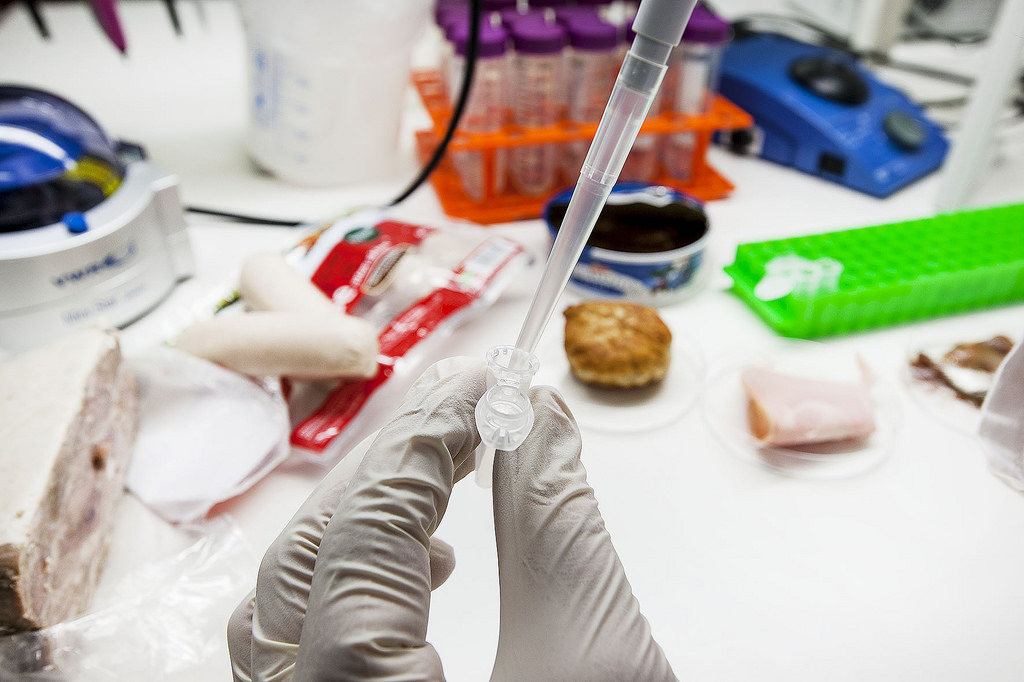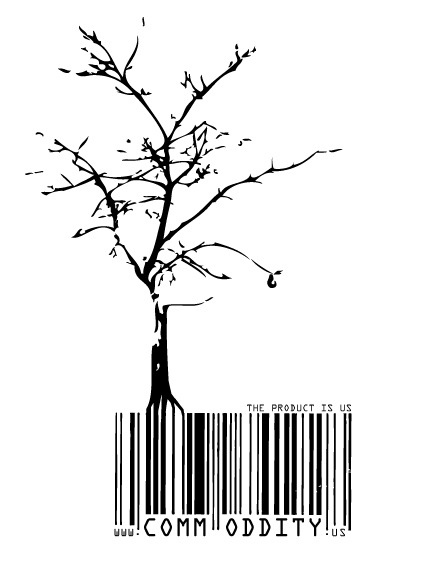
DNA barcoding of Christmas food, Åge Hojem, NTNU University Museum https://www.flickr.com/photos/vitenskapsmuseet/16008786266
Today, throughout the world there are over 12,000 identified fern species. These seedless vascular plants are important members of plant kingdom, from forest floors to modern landscaping. For a long time ferns have posed a difficult problem to researchers. When ferns are immature, referred to as gametophytes, the various species are indistinguishable from one another and have therefore been almost impossible to correctly identify. Now, using a new process called DNA barcoding, researchers have been able to more accurately understand individual fern species, cross pollination, and ultimately improve original evolutional theories of ferns.
Most people are familiar with the small strip of lines on the back of books, Coke cans, and cereal boxes. They appear on almost every product throughout the world. Although barcodes were invented for grocery distribution in the 1970s, their uses have spread far beyond the aisles. In 2003, Paul Hebert, a researcher from the University of Guelph in Ontario, Canada, introduced the concept of “DNA barcoding.” Using a small sample of genetic information, scientist are able to create what is called a DNA barcode, and this allows them to easily identify new or existing species. It has proven extremely useful when species are in identifiable states that make typical taxonomy difficult, such as in the case of fern gametophytes.
(This video is a brief overview of the development of DNA barcoding and how it works today.)
Scientists seem to have found that the perfect DNA sample to gather is located deep within cells. A gene region called CO1. The CO1 gene has proven ideal because the DNA within it changes slowly enough that you can clearly see which species the individual belongs to, but it also changes quickly enough that you can distinguish the individual from the species (Biotechnology Learning Hub, 2009).
While CO1-based DNA barcoding has shown to be fruitful for identifying animals, applying the sequence to the plant kingdom, and specifically, to tricky fern gametophytes has proved more difficult. The commonly used gene region CO1 evolves much to slowly in plants to use for accurate DNA information. Instead, researchers have found two gene regions in the plant’s chloroplast, matK and rbcL, that have proved successful barcode region for plants. This has been an advancement that has already allowed for hundreds of plants to be correctly identified (Hollingsworth, Graham, and Little, 2011).

(Barcode-tree, Lisa Yarost, https://www.flickr.com/photos/lisa_yarost/2093395763)
Currently a digital list of barcodes is being constructed, called Barcode of Life. The list of DNA barcodes is publicly available. This allows community members, novices, and professional scientists to participate in this innovative new categorizing trend. Google and organizations like National Environmental Standards and Regulations Enforcement Agency are even using this online database as a tool in areas of social reform. Dr. David Schindel, the executive secretary of Barcode of Life, explains that barcoding data has been employed in the effort to stop illegal poaching and trafficking of endangered species, “And we’re now working to construct a reference library for the endangered species on Earth and their close relatives to be able to identify things that are being smuggled or poached that are hard to identify.”
Another reason to get excited about DNA barcoding is that it is easy enough that a high schooler can do it. Mark Stoeckle, MD, has been instrumental in the Urban Barcode Project, where he works with New York City high school students using DNA barcoding to help them explore their environment. In a recent interview (Council of Responsible Genetics, 2014) Stoeckle explains, “It’s pretty simple. In this project, the students are thinking of what they want to know and they’re collecting the samples. They then bring them to a laboratory in a classroom that’s set up with the right equipment, where they go through the steps to isolate the DNA and amplify the barcode gene…and students can sort of walk in and, if they have someone supervising them, they can do it on the spot.”
On the face of our blue planet, there are around 8.7 million identified species and researchers believe that it could take another 1,000 years to identify the remaining flora and fauna (Richard Black, 2011). But now, by creating a highly organized, accurate, and accessible system by means of DNA barcoding, we are able to correctly categorize new species and shed light on existing ones, faster than any time before.
If you’d like to get involved, join the discussion, or correctly identify your own fern gametophyte, check out: http://connect.barcodeoflife.net
Bibliography:
- Abuja Podcast, date not disclosed, Interview with Dr. David Schindel, http://photos.state.gov/libraries/nigeria/487468/Transcipts/Transcript-Podcast-Interview_with_DrDavidSchindel-BarcodingOfLifeProject.pdf, (May 17, 2016).
- The American Fern Society, date not disclosed, A Brief Introduction to Ferns, http://amerfernsoc.org/lernfrnl.html, (May 13, 2016).
- Barcode of Life. © 2010–2016. Washington, DC. http://www.barcodeoflife.org. (May 20, 2016).
- BBC, August 2011, Richard Black, http://www.bbc.com/news/science-environment-14616161, (May, 15, 2016).
- Biotechnology Learning Hub, June 24, 2009, The ideal barcoding gene, http://biotechlearn.org.nz/themes/barcoding_life/the_ideal_barcoding_gene, (May, 19, 2016).
- CRG staff, and Mark Stoeckle, date not disclosed, Smugglers, Poachers, and DNA Barcoding, Council for Responsible Genetics, http://www.councilforresponsiblegenetics.org/Genewatch/GeneWatchPage.aspx?pageId=417&archive=yes, (May 19, 2016).
- Fay-Wei Li, Li-Yaung Kuo, Carl J. Rothfels, Atsushi Ebihara, Wen-Liang Chiou, Michael D. Windham, Kathleen M. Pryer, October 20, 2011, rbcL and matK Earn Two Thumbs Up as the Core DNA Barcode for Ferns, PLOS one, http://journals.plos.org/plosone/article?id=10.1371/, jounal.pone.0026597, (May, 12, 2016).
- Hollingsworth PM, Graham SW, Little DP, 2011, Choosing and Using a Plant DNA Barcode. PLoS ONE 6(5): e19254. doi:10.1371/journal.pone.0019254, http://journals.plos.org/plosone/article?id=10.1371/journal.pone.0019254, (May 19, 2016).
- S.G. Newmaster, A.J. Fazekas, S. Ragupathy, 2006, DNA barcoding in land plants: evaluation of rbcL in a multigene tiered approach, Canadian Journal of Botany, 84:335-341, 10.1139/b06-047, http://www.nrcresearchpress.com/action/showCitFormats?doi=10.1139%2Fb06-047, (May 15, 2016).
Leave a Reply